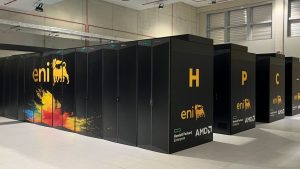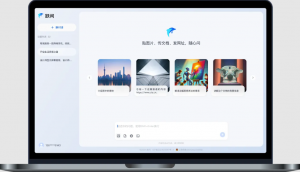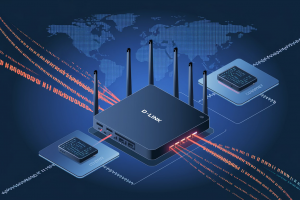Server market realignment | The #CIOangle
IBM System x General Manager Adalio Sanchez speaking at an IBM event in Beijing on January 16, 2014 to debut the company’s latest x86-based servers. Today IBM announced plans for Lenovo to acquire IBM’s x86 server business for $2.3 billion.
The server market is in the midst of a radical realignment, the likes of which have not been seen since the shakeout of the 1980s that saw most of the minicomputer makers, including Prime Computer, Data General and Digital Equipment Corp., disappear, devastating the Boston high tech corridor. And while the writing has been on the wall for some time, this major industry shift promises to happen much faster than that one.
The first major shock came to the market last month, when IBM announced an agreement to sell its System x servers, x86 network switches and other x86-based products to Lenovo, continuing IBM’s transition into a software and services provider. While internal sources say that the sale, which includes the transfer of up to 6,700 IBM employees to the commodity system maker, will take several months to complete, this announcement definitely points to the future of x86 hardware.
Actually the commodization of x86 has been ongoing for several years and is well under way. It started with the invention of hyperscale by the big Web service companies including Yahoo, Google, Amazon, and Facebook. These companies buy huge quantities of standardized white box servers direct from Taiwan and China for their mega-data centers, run them hard in highly automated environments and, when something breaks, throw it away and replace it with a new box. But even before that the seeds of commodization were sown by the major traditional players themselves when they handed manufacturing of their servers over to the Taiwanese. Essentially they created their own replacements.
That arrangement worked for them as long as the hardware still required lots of attention, expensive built-in management software, and constant optimization fine tuning to handle the compute loads. But in the last decade three things have changed. First, Moore’s Law has driven compute power and network speed to the point that detailed optimization is no longer necessary for most compute loads. Second, the management software has moved to the virtualization layer. The result of these two trends is that increasingly the focus of IT organization attention is moving up the stack to software, and hardware is taken for granted. After 67 years, the techies are finally tiring of fiddling constantly with the hardware.
Third, increasing amounts of the compute load is moving steadily to the cloud. Companies that always had to buy extra compute to support peak loads now can move those applications into a hybrid cloud, size their hardware for the average load and burst the peaks to their public cloud partner. As those companies gain a comfort level with their public cloud service providers, they will start moving entire compute loads, particularly new Web-based applications such as big data analysis that have a strong affinity to the public cloud, entirely to those providers, in many cases by subscribing to SaaS services.
Trend toward standardization
![]() The result of this is that the underlying hardware is becoming highly standardized, and the focus of computing is moving to software and services. Under the onslaught of hyperscale and cloud computing, the market for the traditional vendors is decreasing, a trend that will accelerate through this decade. And the market is shifting from piece-parts to converged systems as customers seek to simplify their supply chains and save money. As Wikibon CTO David Floyer points out, the more of the system that can be covered by a single SKU, the more customers can save. The hardware growth for both IBM and HP is clearly in their converged systems, and their differentiation increasingly comes from what they provide above the virtualization layer in middleware and applications. The expansion of virtualization from servers to the software-led data center will only drive this trend faster.
The result of this is that the underlying hardware is becoming highly standardized, and the focus of computing is moving to software and services. Under the onslaught of hyperscale and cloud computing, the market for the traditional vendors is decreasing, a trend that will accelerate through this decade. And the market is shifting from piece-parts to converged systems as customers seek to simplify their supply chains and save money. As Wikibon CTO David Floyer points out, the more of the system that can be covered by a single SKU, the more customers can save. The hardware growth for both IBM and HP is clearly in their converged systems, and their differentiation increasingly comes from what they provide above the virtualization layer in middleware and applications. The expansion of virtualization from servers to the software-led data center will only drive this trend faster.
Open source hardware is beginning to appear in the market and can be expected to become commonplace over the next five years as the big Asian white box makers adopt them as the next step in driving cost out of the server manufacturing process.
The clear message for x86 server vendors is either to drive cost out of their hardware business and become commodity providers on the level of the Taiwanese while developing differentiation through higher level software running on top of those commoditized boxes or get out of the x86 hardware business entirely and source their servers from a commodity provider. IBM has clearly chosen the latter course with its sale of System x to Lenovo along with the creation of a close partnership with the Chinese commodity hardware manufacturer.
IBM’s strategy — partner with Lenovo
.
This is the right strategy for both companies. Since buying IBM’s PC manufacturing business a decade ago, Lenovo has proven itself as a quality commodity electronics maker, and in the process passing HP last year to become the number one PC vendor in worldwide sales. IBM, meanwhile, is a highly creative company with a huge R & D budget that is betting its future on leading edge areas including big data processing and analysis, business cloud services worldwide, and Watson.
The close partnership should leverage the very different strengths of both companies to create products that benefit from both, particularly in the IBM PureSystems line of integrated systems. Meanwhile Lenovo is likely to enter the hyperscale market once it has brought its manufacturing and marketing to bear on the IBM System x line. It also will certainly continue to sell its rebranded System x servers into the traditional business and governmental markets and can be expected to field its own x86-based converged system line probably in partnership with IBM. Since both companies will be profiting from the relationship, regardless of whose brand is on the box, they both will have strong business reasons to maintain a close partnership into the future.
IBM is in the market position it is in today in large part because of the visionary leadership of CEO Louis V. Gerstner Jr., IBM’s head for a decade through much of the 1990s and early 2000s. He foresaw the industry changes we are experiencing today, at least in their general form, and espoused the strategy of transforming IBM from a hardware giant to a software and services company. In retrospect this was prophetic, and while obviously nobody in 1993 could have anticipated the impact of cloud computing and in Gerstner’s time “services” mostly meant consulting, he moved IBM in a direction that puts it in a strong position today to capitalize on the burgeoning cloud services market. And his successors, Samuel J. Palmisano and Virginia M. Rometty, have continued to move IBM forward and make the hard decisions sometimes necessary for IBM’s transformation.
HP at the crossroads
But what about the other big x86 server vendors, who did not have the good fortune to have a visionary at their helm in the 1990s? HP in particular seems to have been searching for a path forward in recent years with its parade of short-lived CIOs. Carley Fiorina certainly had a strong vision, but unfortunately it proved to be the wrong one for the company.
After she left, HP suffered from a revolving door at the top. Michael Hurd was the only CEO to last long enough to create a vision for the company’s future, but he seemed mainly to see “more of the same”. Meg Whitman has been in charge for nearly two-and-half-years now and seems to have stabilized the company, but it is also suffering from market shrinkage. Its answer so far has been to bring forward some innovative hardware, but large parts of the company outside converged systems, Moonshot and storage seem to be going forward blindly, producing more of the same with no regard for the reefs ahead, and HPs financial results in recent quarters have shown the result.
HP needs to make up its mind, and fast. In its first two decades it was a highly creative, if sometimes chaotic, company producing leading edge products including some of the first servers and desktop printers. It really was the Apple Computer of its day. But it seems to have lost much of that, and today it buys more innovation than it produces in house, Moonshot not withstanding.
The problem is that while it has some very innovative products, they are all one-offs, and large parts of the company appear to be drifting. Decisions seem to be tactical rather than strategic. The PC group, for instance, is obviously floundering. At one time HP was almost as much a consumer company, with its desktop printers and PCs, as it was a business-to-business vendor. It has neglected that part of its business, which is a mistake.
HP seems to be moving in the direction of becoming a U.S.-based commodity hardware supplier. If that is what its leadership wants, then it should embrace that completely and start competing on price in all its markets while driving cost out its processes at all levels. If it wants to return to its roots as a highly creative company then it should start building on products like Moonshot and revitalize its consumer and business market mindshare with new, creative electronic products that can create new markets. It cannot do both — no company can.
A message from John Furrier, co-founder of SiliconANGLE:
Your vote of support is important to us and it helps us keep the content FREE.
One click below supports our mission to provide free, deep, and relevant content.
Join our community on YouTube
Join the community that includes more than 15,000 #CubeAlumni experts, including Amazon.com CEO Andy Jassy, Dell Technologies founder and CEO Michael Dell, Intel CEO Pat Gelsinger, and many more luminaries and experts.
THANK YOU













